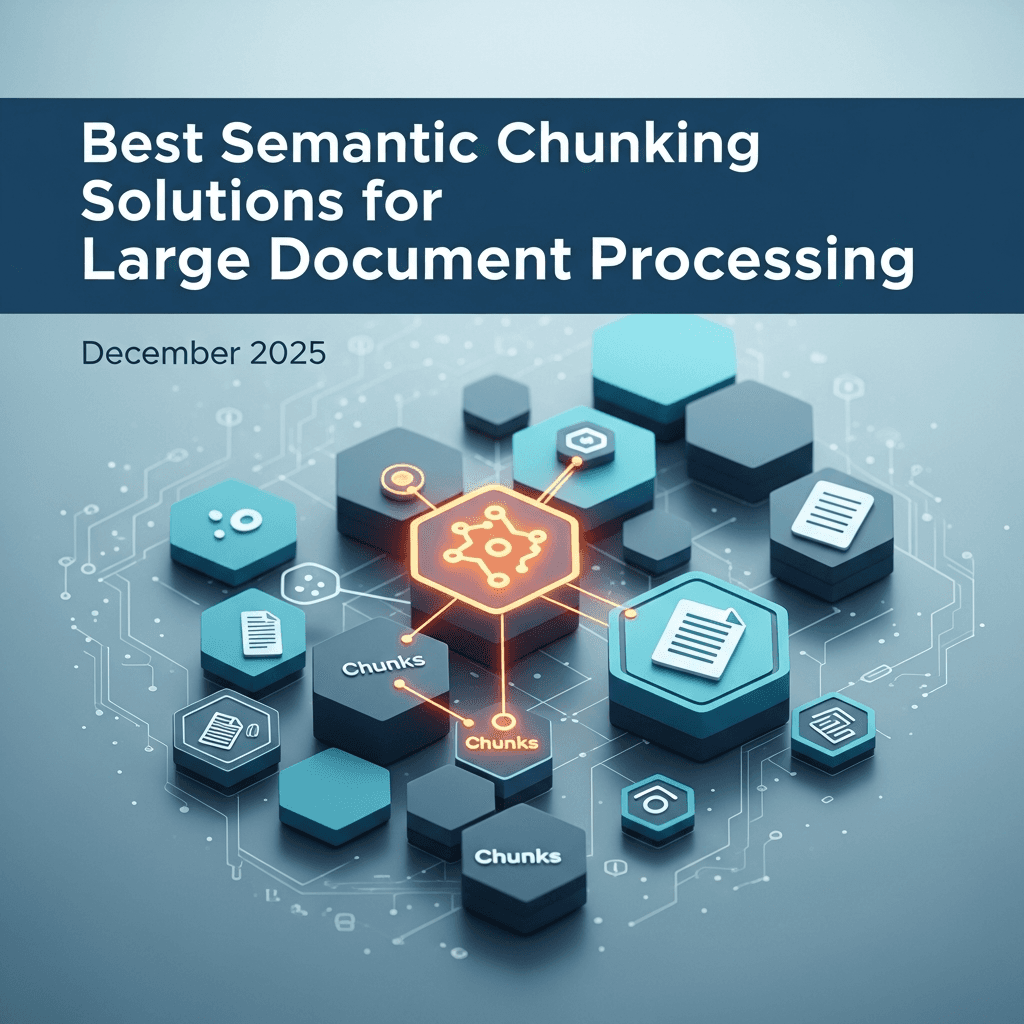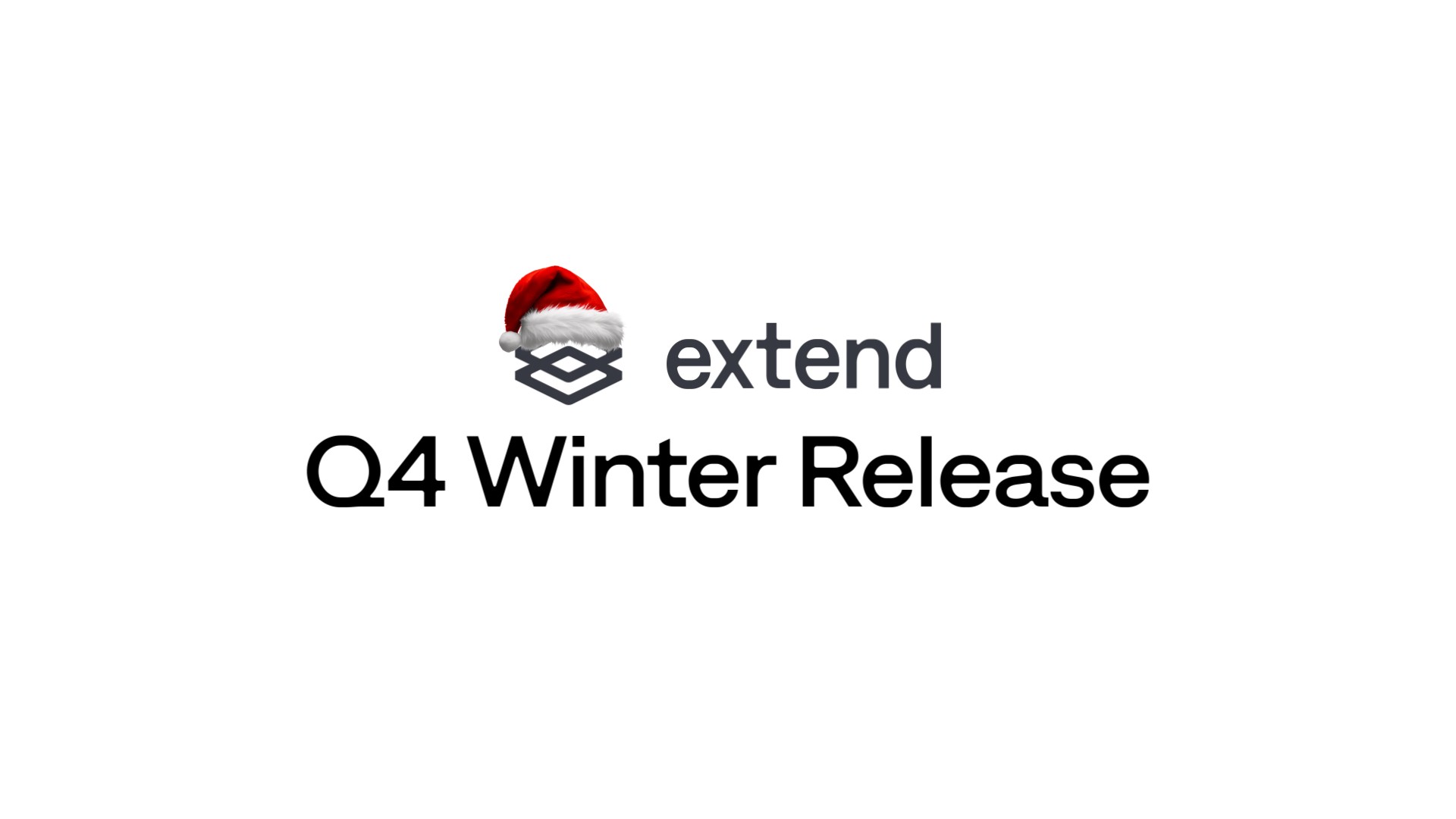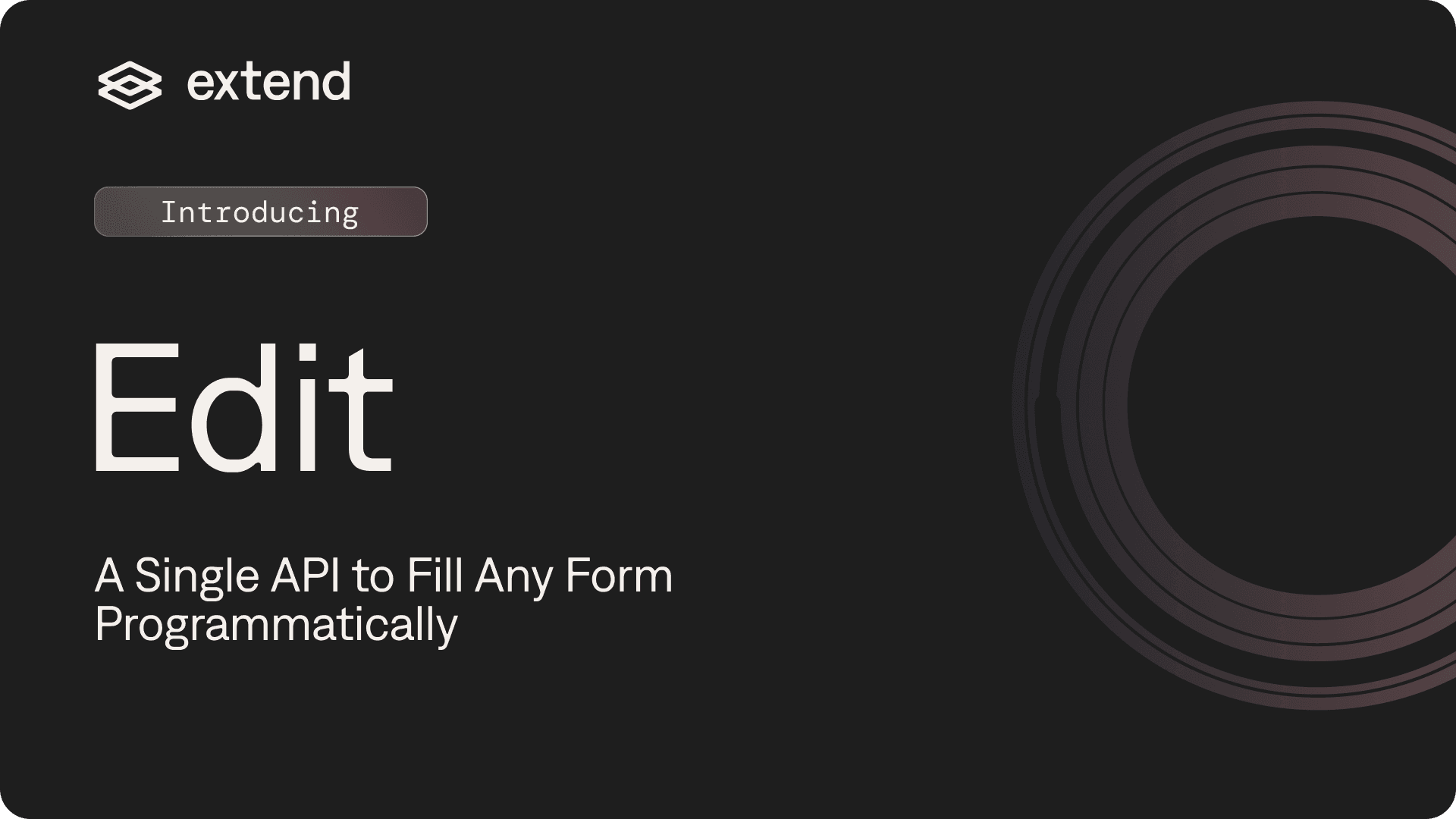8 MIN READ
Sep 26, 2025
Best OCR Tool for Bills of Lading (BOLs)
Kushal Byatnal
Co-founder, CEO
Processing thousands of bills of lading manually costs logistics teams weeks of time and introduces costly errors that ripple through entire supply chains. The right bills of lading OCR tool can cut processing time from hours to seconds while maintaining the accuracy your operations depend on. But with tools ranging from basic text extraction to advanced document intelligence, choosing the wrong one means you'll still be stuck with manual corrections and workflow bottlenecks. In this guide, I'll walk you through the top OCR tools designed for bills of lading, comparing their accuracy rates, processing features, and real-world performance with complex shipping documents.
TLDR:
Extend leads with LLM-powered document understanding and >95% accuracy on complex BOL layouts
Traditional OCR tools struggle with handwritten signatures, carrier stamps, and varying document formats
Advanced solutions offer human-in-the-loop validation and continuous learning features
Processing speed ranges from under 5 seconds to real-time extraction depending on the tool
Integration options vary widely between basic API access and full workflow orchestration
What is Bills of Lading OCR
A bill of lading is a legal document issued by a carrier to a shipper, detailing the type, quantity, and destination of goods being transported. This critical shipping document serves as both a receipt and a contract between the shipper and carrier.
When applied to bills of lading, OCR technology allows smooth extraction of important information like shipper details, consignee locations, shipment dates, cargo descriptions, and weights from scanned or digital BOL documents. The process changes paper-based workflows into digital data streams.
A single freight shipment can require over 50 separate documents, and that's just for international routes.
OCR technology processes these documents in seconds, freeing up valuable time for logistics teams. With AI technologies like machine learning and LLMs, the software understands context and extracts relevant information accurately. By combining optical character recognition with advanced AI, it processes and categorizes documents at scale.
The challenge lies in handling the complexity of real-world BOL documents. These often include handwritten signatures, carrier stamps, varying layouts between different carriers, and sometimes damaged or poorly scanned copies that traditional OCR struggles to process accurately.

How We Ranked the Best OCR Tools for Bills of Lading
We looked at OCR tools based on publicly available information and documented features in several key areas important for BOL processing. Our ranking criteria focused on accuracy rates for structured documents, handling of complex layouts typical in shipping documents, processing speed, and integration options with logistics management systems.
We assessed each tool's capacity to handle handwritten signatures, carrier stamps, and multi-language documents common in international shipping. Other factors included validation features, human-in-the-loop options for quality control, and workflow automation features specific to logistics operations.
The review also considered the ability to extract line-item details from tables and forms, which is important for complete BOL processing. We looked at how well each solution handles document variations between different carriers and shipping methods.
1. Best Overall: Extend

Extend is the complete document processing toolkit comprised of the most accurate parsing, extraction, and splitting APIs to ship your hardest use cases in minutes, not months. Extend's suite of models, infrastructure, and tooling give you the most powerful custom document solution, without any of the overhead. Agents automate the entire lifecycle of document processing, allowing your engineering teams to process your most complex documents and optimize performance at scale.
Extend delivers complete document processing designed for complex logistics documents like bills of lading. Built from the ground up with LLMs, Extend handles challenging BOL elements including tables, signatures, handwritten notes, and damaged scans while maintaining exceptional accuracy even on degraded documents. Leading logistics companies like Nuvocargo use Extend's APIs to achieve 97-99% accuracy with nearly zero human involvement over tens of thousands of documents
The system processes virtually any format while preserving layout and structure. This means critical information isn't lost during the conversion process, which is important for maintaining data integrity in shipping operations.
Key strengths include:
LLM-powered understanding of complex shipping document layouts and context
Pre-built processors for extraction, classification, and splitting with >95% accuracy
Human-in-the-loop review tools for domain experts to validate and improve results
Continuously improving pipelines that learn from corrections and feedback
Rapid deployment allowing production-grade accuracy in days rather than months
The document processing features go beyond simple text extraction to understand the semantic meaning of different sections within BOL documents. This contextual understanding allows for more accurate data extraction even when document layouts vary widely.
Bottom line: Extend provides the most complete BOL processing solution available, combining advanced AI with practical workflow tools.
2. Nanonets

Nanonets provides OCR tools for bill of lading documents with basic extraction functionality. Their approach focuses on pre-trained models that recognize common BOL fields without requiring extensive setup.
What they offer
The solution includes pre-trained models for common BOL fields, upload options via email, API, and cloud storage, basic data capture and validation features, and integration options with existing systems.
Bottom line: Basic OCR functionality but lacks advanced document understanding features needed for complex shipping workflows.
3. Mindee

Mindee provides a bill of lading OCR API focused on extracting standard fields from shipping documents. Their computer vision technology aims to automate data extraction from these complex documents, allowing operations teams to improve accuracy and simplify workflows.
What they offer
Their solution provides computer vision technology for data extraction, support for over 50 countries of BOL formats, pricing starting at $0.10 per document, and API integration features for connecting with existing logistics systems.
The limitation lies in being restricted to basic field extraction without advanced document understanding. This means complex document variations or non-standard layouts may not be processed accurately.
Bottom line: Provides standard OCR extraction but struggles with complex document variations common in international shipping.
4. Veryfi

Veryfi focuses on freight and customs document automation, including bills of lading processing. Their OCR is pre-trained on thousands of real-world BOL formats, including handwritten signatures, carrier stamps, scanned PDFs, and multi-language layouts.
What they offer
The system handles both structured and semi-structured BOLs from ocean, air, and LTL carriers. Features include pre-trained models for different carrier formats, line-item detail extraction tools and quick processing times.
The main limitation is that it focuses primarily on freight auditing rather than full document workflows. This narrow focus may not serve organizations looking for broader document automation tools.
Bottom line: Solid OCR performance but limited workflow automation features for full logistics operations.
5. Parseur

Parseur offers bill of lading OCR functionality with multilingual document support. Their technology aims to minimize errors through AI-powered OCR designed for high accuracy across different document types and languages.
What they offer
The solution supports documents in any language and format, provides integration with Zapier and Make, includes a visual editor for creating custom templates, and offers batch processing features for handling multiple documents simultaneously.
The main limitation is requiring manual template creation for new document variations. This approach becomes time-consuming when dealing with the diverse BOL formats used across different carriers and shipping methods.
Bottom line: Template-based approach limits flexibility for diverse BOL formats encountered in real-world logistics operations.
Feature Comparison Table
Feature | Extend | Nanonets | Mindee | Veryfi | Parseur |
|---|---|---|---|---|---|
Advanced LLM Understanding | ✓ | ✗ | ✗ | ✗ | ✗ |
Layout Preservation | ✓ | ✗ | ✗ | ✗ | ✗ |
Human-in-the-Loop Tooling | ✓ | Limited | ✗ | ✗ | Limited |
Workflow Orchestration | ✓ | ✗ | ✗ | ✗ | Basic |
Continuous Learning | ✓ | ✗ | ✗ | ✗ | ✗ |
Complex Table Handling | ✓ | Basic | Basic | ✓ | Basic |
Multi-format Support | ✓ | ✓ | ✓ | ✓ | ✓ |
Why Extend is the Best OCR Tool for Bills of Lading
Manual document handling slows down operations and often introduces costly errors. Using manual labor to process purchase orders, invoices, bills of lading, delivery receipts, and other shipping documents is both expensive and error-prone.
Extend tackles these challenges with purpose-built document intelligence that understands the complexity of shipping documents beyond simple text extraction. Its LLM-powered approach delivers superior accuracy while allowing rapid deployment and continuous improvement through human feedback loops. They’ve built agents that automate the lifecycle of document processing, and tooling that allows your engineering teams to process your most complex documents and optimize performance at scale.
The key differentiator lies in Extend's ability to understand document context rather than just extracting text. This means it can handle the variations in BOL formats, interpret handwritten notes, and maintain accuracy even with damaged or poorly scanned documents.
For logistics teams processing high volumes of bills of lading, this translates to fewer manual corrections, faster processing times, and more reliable data extraction that integrates smoothly with existing systems.
FAQ
What accuracy can I expect from BOL OCR tools?
Most traditional OCR tools achieve around 80% accuracy on bills of lading, while advanced solutions like Extend consistently exceed 95% accuracy. The difference comes from understanding document context and layout rather than just recognizing text.
How long does it take to implement BOL OCR?
Implementation time varies greatly. Basic OCR APIs can be integrated in days but may require months of fine-tuning. Advanced solutions like Extend can achieve production-grade accuracy in days through pre-built processors and LLM-powered understanding.
Can OCR handle handwritten signatures and stamps on BOLs?
Yes, but features vary widely. Traditional OCR struggles with handwritten elements, while LLM-powered solutions like Extend can interpret and extract information from signatures, stamps, and handwritten notes with high accuracy.
Final thoughts on OCR solutions for bills of lading processing
You can simplify your logistics operations by choosing the right OCR solution for your bills of lading. Advanced platforms like Extend handle complex shipping documents with over 95% accuracy, far beyond basic text extraction. Bills of lading OCR changes messy paperwork into structured data in days, not months.
WHY EXTEND?




